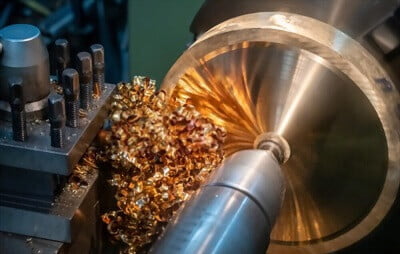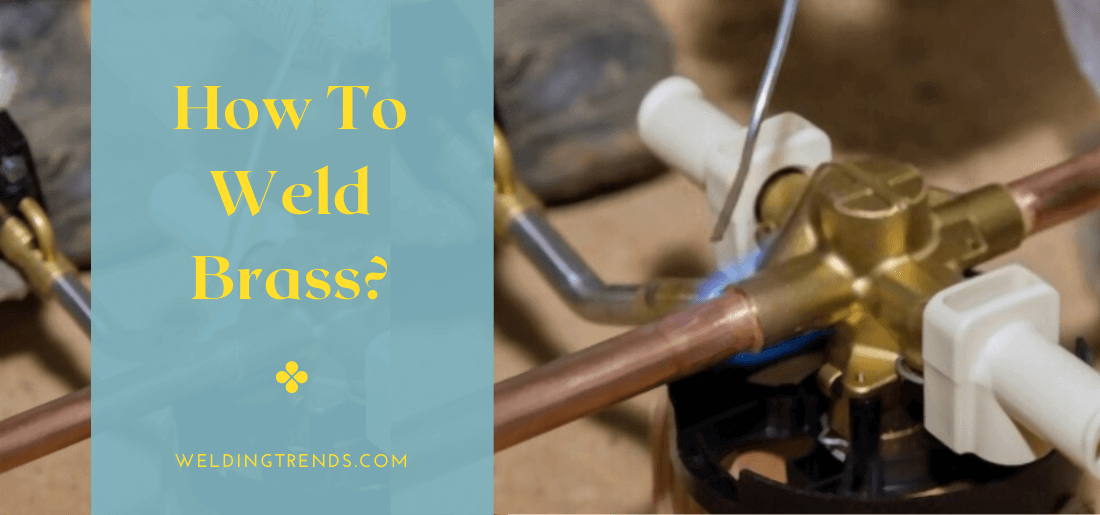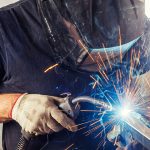Are you looking for best ways to weld brass? If yes then don’t worry because in this article we are going to tell you about ways that can help you in welding brass.
Brass is a compound that is a mixture of copper and tin. These compounds are highly machine able and workable. Copper itself is a compound that is highly malleable and can easily draw into wires. Whereas zinc is a silvery white metal, it tarnishes in the air.
Using brass can help in places where high strength is not necessary and corrosion resistance is required. It can provide good corrosion resistance as well. To join brass pieces, you can use many methods such as soldering and welding.
Which Method is best to Weld Brass?
One of the best ways to weld brass with brass is to use oxy acetylene welding. It uses flame as the source of heat input, ensuring the homogenize heating of brass and solder wire. It provides a good weld. It ensures that the solder properly diffuses into the brass pieces and makes the weld join permanently and strongly.
More than that, oxyacetylene welding has two zones in its flames. One is call preheating flame, and the other is called the oxidizing flame. Oxidizing flame is mainly used for cutting, whereas the preheating flame is use for preheating the metal so that there is less chance of generation of heat affected zone that causes the weld to become brittle.
How To Weld Brass To Brass?
Since brass is a low melting and transition temperature material, it is possible to Tig weld and solder it. Welding brass is relatively easy and simple once you understand the basic working steps of the brass. Although brass is easy to solder, but it requires some of the processing before welding. Some of these processes are discussed below:
Cutting The Brass
To weld the brass to brass, you need to prepare the brass samples before welding. Proper dimensioning is necessary to be done before welding as you cannot correct the dimensions after you’ve welded it. Although brass is soft and easy to work on but it is quite difficult to work on a brass once you have welded it as it will lead the weld to deformation.

When it comes to dimension, it is essential to understand that abrasive cutting or if an unskilled person cuts the sample for weld, the weld won’t be as per requirements. So it requires a smooth and shiny cut for the weld to be perfect. A skillful worker or a steady tool is needed to cut the brass for the welding purpose, such as cutting pliers and hacksaws.
If you want to weld brass tubes, then for their dimensioning, you also need a tool to cut straight and steady surface that is to weld. For this, skills is require; more than that, it is essential to use the right tool. Tools like a saw and a tubing cutter can cut the brass tubes into the perfect shapes required for welding.
Bending Into Shapes
It is essential to note the shape in which the metal is to weld. Brass is a low melting temperature material. Since it has a low melting temperature and can easily shape, before welding, it is necessary to give the brass its required shape because if after welding, you try to shape brass, it will most likely damage the weld.
Welding Brass To Brass
After preparing the sample, the process of welding the brass to brass comes. The most important thing is to select the welding process first. You can either use flame welding, or you can go to arc shielded welding. But keep that in mind that both methods can lead to porosity and generation of zinc fumes at high temperature.
Zinc fumes are not good for human health. They can adversely affect the human lungs. One should keep in mind that the high heat input during welding can harm human health and affect the weld’s quality. So one should ensure that they need to select optimum welding parameters.
You can take the following steps for welding the brass to brass:
- Firstly, you need to solder to weld the brass with brass; many solders are available in the markets. You can choose the one that fits your need and budget. The only important thing to keep in mind while selecting a solder is that it should be soft and have a low melting point.
- You should ensure that the pieces of brass you are welding are having proper solder in them, and they share a pretty good surface area.
- Now get your work area ready to weld the pieces of brass.
- Now clean your brass pieces well so that there are no remains or residue of the saw or cutting debris. You can use alcohol vibes.
- It is essential to get the brass pieces in place which you want to weld. You should ensure the proper arrangement of parts so that no misalignment is visible after the welding.
- It is essential to use flux also as this ensures that the impurities that generate during welding due to the fusion of brass pieces are skim off from the weldment. The flux helps in removing the impurities generated during the welding from the weldment.
- The next important step is to get your solder ready. Since the older is in the form of round wire, it is better to hammer it to flatten it as this flattening can cause less wastage of the solder.
- Grab your torch now; you need to clean the torch first and then place the solder in front of the burning torch in the flow direction. Firstly set the torch heat output to the lowest setting and preheat the brass pieces. It won’t be easy to maintain the same temperature for both the brass pieces. Try to keep the temperature for both the brass pieces.
- Once you find that both the brass pieces’ temperature is hot enough, then place the solder wire in it, now the solder wire will flow into the seam of the rightly placed brass pieces. Once solder solidifies, it will look shiny. You can remove the heat now. When the welding is ensured, you can easily remove the heat. It is necessary to ensure that proper heat is given to the weldment.
This is how brass to brass welding is performed. Preparing the brass sample is necessary and requires more time. The rest of the process is easy to do and can be done in less time. These are some of the simple steps that are taken into account to ensure proper brass to brass welding. If you aim to get a good quality weld, then these are the precautions that are needed to be taken into account.
Important Questions about Brass Welding
What Type Of Helmet Should I Use When Welding Brass?
No such helmet is required for the welding of brass. Welding of brass involves soldering. So it does not create such a high intensity and high-temperature heat that can cause the weld to reach such an extreme temperature that causes the generation of zinc fumes. The primary danger while welding brass is the generation of zinc fumes.
If the weld parameters control optimum values, then there is less chance of zinc fumes generation that can cause damage to human health. Thus, no such welding helmet is necessary; you can only use a mask to ensure that it do not affect human health if zinc fumes forms. But if you want to use welding helmet for you own choice then Auto Darkening helmet is best option for you.
What is The Most Versatile Type of Welding Process?
If we talk about welding, the welding process to be chosen thoroughly depends on the type of material to weld. Other things, such as material thickness and geometry, also play an important role while selecting the welding process. For example, the welding of normal thickness materials can be weld by friction stir welding, but it is not suitable for high thicknesses.
Generally, laser beam Welding is one of the advances and most versatile type of welding process. It generates a high laser beam of desired energy that focuses mainly on the area that is to be welded. It reduces the chance of heat affected zone generation as the heat is not dispersed on some other part of the base metal; instead, the high energy beam focuses heat only at the weld area.
Final Thoughts
If we talk about brass to brass welding, it is a pretty complex process because one cannot overheat the brass during welding. After all, it can generate zinc fumes and poor quality weld. So having a good knowledge of welding brass to brass is essential for the welding purpose. Furthermore, it is necessary to understand the brass composition and properties.
In the article we mentioned the steps of how to weld brass. Moreover we also talked about steps that are needed to ensure the quality of weld, and the precautions required to be taken for welding brass to brass. I hope you find this article helpful.
Related Articles:
How To Become A Certified Welder?
How Dangerous Is Underwater Welding?




